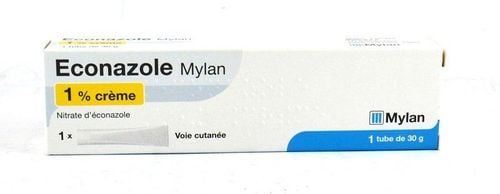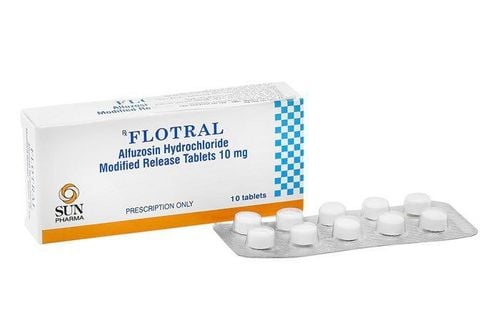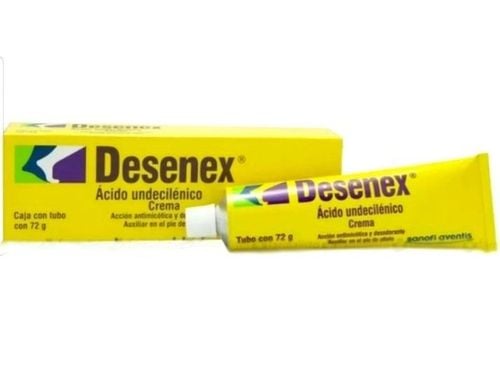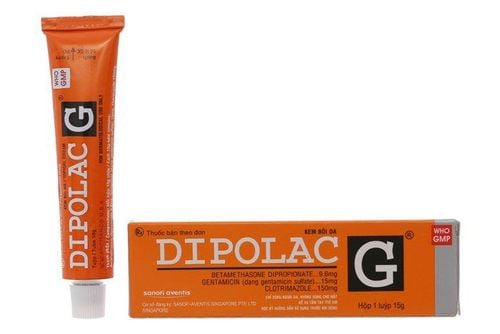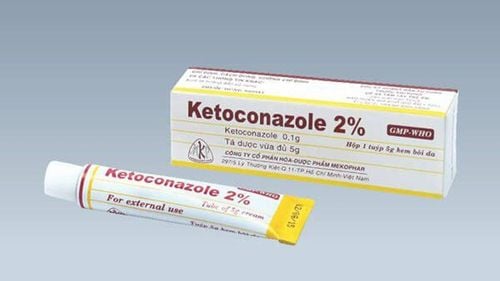This is an automatically translated article.
Traphalucin is indicated in the symptomatic treatment of people with skin diseases such as discoid eczema, seborrheic eczema, atopic dermatitis, neurodermatitis, contact dermatitis, psoriasis,... Learn about the uses and notes when using Traphalucin through the article below.1. Uses of the drug Traphalucin
“What is Traphalucin?”. Traphalucin is prepared in the form of topical ointment containing the active ingredient Fluocinolone Acetonide.Fluocinolone Acetonide is a synthetic corticosteroid with a Fluor atom attached to the steroid nucleus. The local mechanism of action of the drug is a combination of 3 important properties including antipruritic, anti-inflammatory and vasoconstrictor. The anti-inflammatory effect is through the mechanism of stabilizing the Lysosomal membrane of leukocytes, inhibiting the concentration of macrophages in the inflammatory area, reducing the adhesion of leukocytes to the capillary endothelium, reducing complement composition, and reducing wall permeability. capillary, anti-histamine effects and reduce kinin release from the matrix, proliferation of fibroblasts, collagen deposition and scar formation in tissues.
Traphalucin is indicated in the following cases:
Treatment of skin Eczema such as Seborrheic Eczema, Discoid Eczema, Allergic Eczema; Treatment of contact dermatitis, atopic dermatitis, psoriasis, neurodermatitis, Lichen planus and discoid lupus erythematosus.
2. Dosage of Traphalucin
Traphalucin belongs to the group of prescription drugs, the dose of which is prescribed by the doctor based on the medical condition. Patients should absolutely not self-medicate without a doctor's prescription.The recommended dose of Traphalucin is to apply a thin layer to the affected skin, about 2-4 times a day depending on the severity of the disease.
3. Traphalucin side effects
Traphalucin can cause some side effects as follows:Common: Hypersensitivity, allergic reactions in the area where the drug is applied; Uncommon: Secondary infections, stretch marks, skin atrophy, rosacea, hypersensitivity, facial dermatitis; Rare: Hypersensitivity, hirsutism, adrenal insufficiency. The risk of systemic side effects is increased with long-term use of the drug, large areas of application, or treatment of areas of skin that are affected by a rash, or with a tight bandage. Patients need to inform their doctor about unwanted symptoms encountered during treatment with Traphalucin.
4. Notes when using Traphalucin
4.1. Contraindications
The use of Traphalucin is contraindicated in the following cases:Patients are sensitive to any component of Traphalucin; People with purulent dermatitis, skin fungus, viral dermatitis, skin tuberculosis; People with rosacea, groin.
4.2. Note when using
Note when using Traphalucin in the following cases:Be careful when using Traphalucin in people with diabetes; Do not use the drug for more than 3-4 weeks, do not apply the drug to the skin of the neck, face, perineal area; Use caution when using Traphalucin in pregnant women, women who are breastfeeding. The use of drugs in these subjects should be prescribed by the treating physician based on the benefits and risks. Store Traphalucin at room temperature, away from direct sunlight and high humidity.




